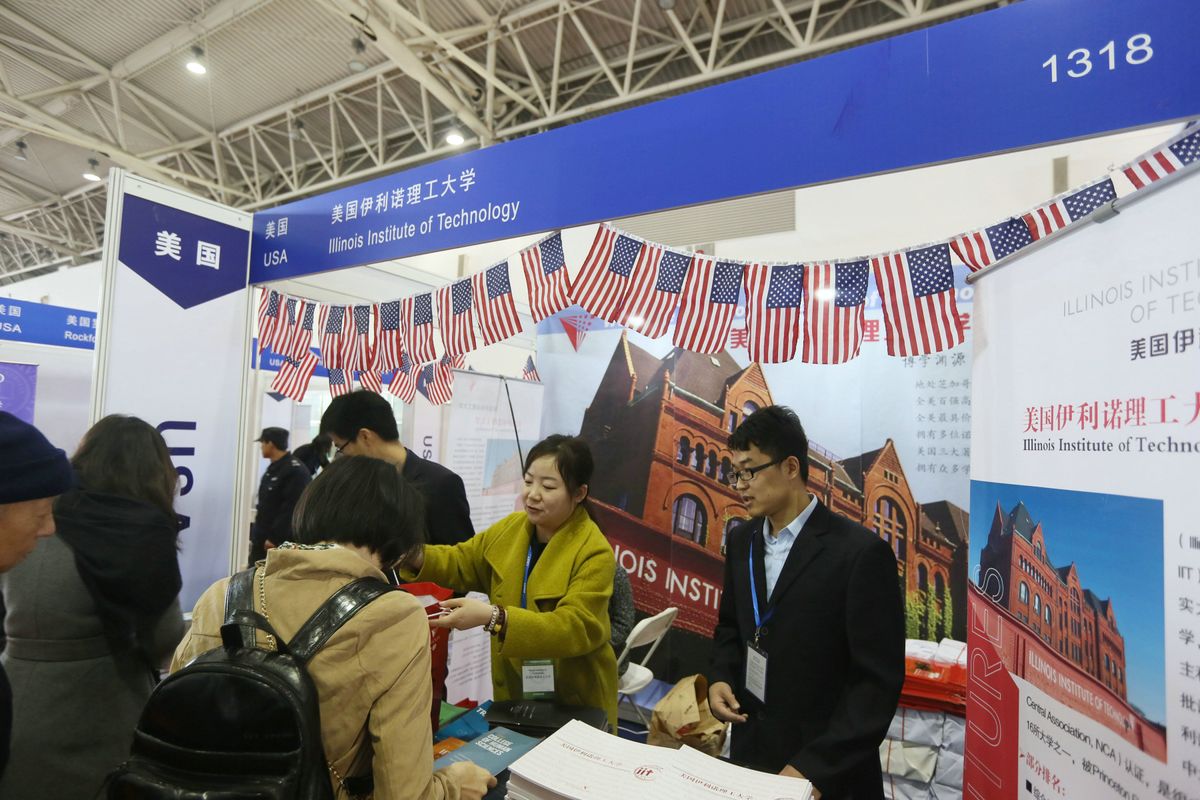
-Chinese visitors talk with education consultants at the booth of the United States during an expo in Beijing, China
Riley Callanan
Jan 03, 2025
GZERO
First, they came for the H-1B visa. Now, MAGA activists are pushing to end the US’ Optional Practical Training, or OPT, program, calling it a“guest worker program” that acts as a backdoor to the H-1B and threatens American jobs.
What is OPT? The program was introduced in 1947 to allow foreign students to work in the US if their employment was required or recommended by their school. Initially, the program was designed for short-term, practical training, but itwas extended for STEM grads in 2008 from 12 to 29 months and again in 2018 for up to 36 months. It is widely used bystudents from India: In 2023-24, 42.9% of Indian students in the US were pursuing mathematics or computer science, while 24.5% were enrolled in engineering programs.
What would happen if the US OPT-ed out? Ending OPT would impact the nearly 350,000 students who qualify for the program every year, particularly in STEM fields, and cause a cash crunch for universities reliant on high international tuition fees. It would affect businesses in tech, health care, and engineering, industries that attract the most OPT candidates. Opponents claim, however, that the US has no STEM worker shortage and that ending the program would provide more work for homegrown grads. So far, Elon Musk has not waded into the OPT fray, but we’re waiting.
First, they came for the H-1B visa. Now, MAGA activists are pushing to end the US’ Optional Practical Training, or OPT, program, calling it a“guest worker program” that acts as a backdoor to the H-1B and threatens American jobs.
What is OPT? The program was introduced in 1947 to allow foreign students to work in the US if their employment was required or recommended by their school. Initially, the program was designed for short-term, practical training, but itwas extended for STEM grads in 2008 from 12 to 29 months and again in 2018 for up to 36 months. It is widely used bystudents from India: In 2023-24, 42.9% of Indian students in the US were pursuing mathematics or computer science, while 24.5% were enrolled in engineering programs.
What would happen if the US OPT-ed out? Ending OPT would impact the nearly 350,000 students who qualify for the program every year, particularly in STEM fields, and cause a cash crunch for universities reliant on high international tuition fees. It would affect businesses in tech, health care, and engineering, industries that attract the most OPT candidates. Opponents claim, however, that the US has no STEM worker shortage and that ending the program would provide more work for homegrown grads. So far, Elon Musk has not waded into the OPT fray, but we’re waiting.
No comments:
Post a Comment